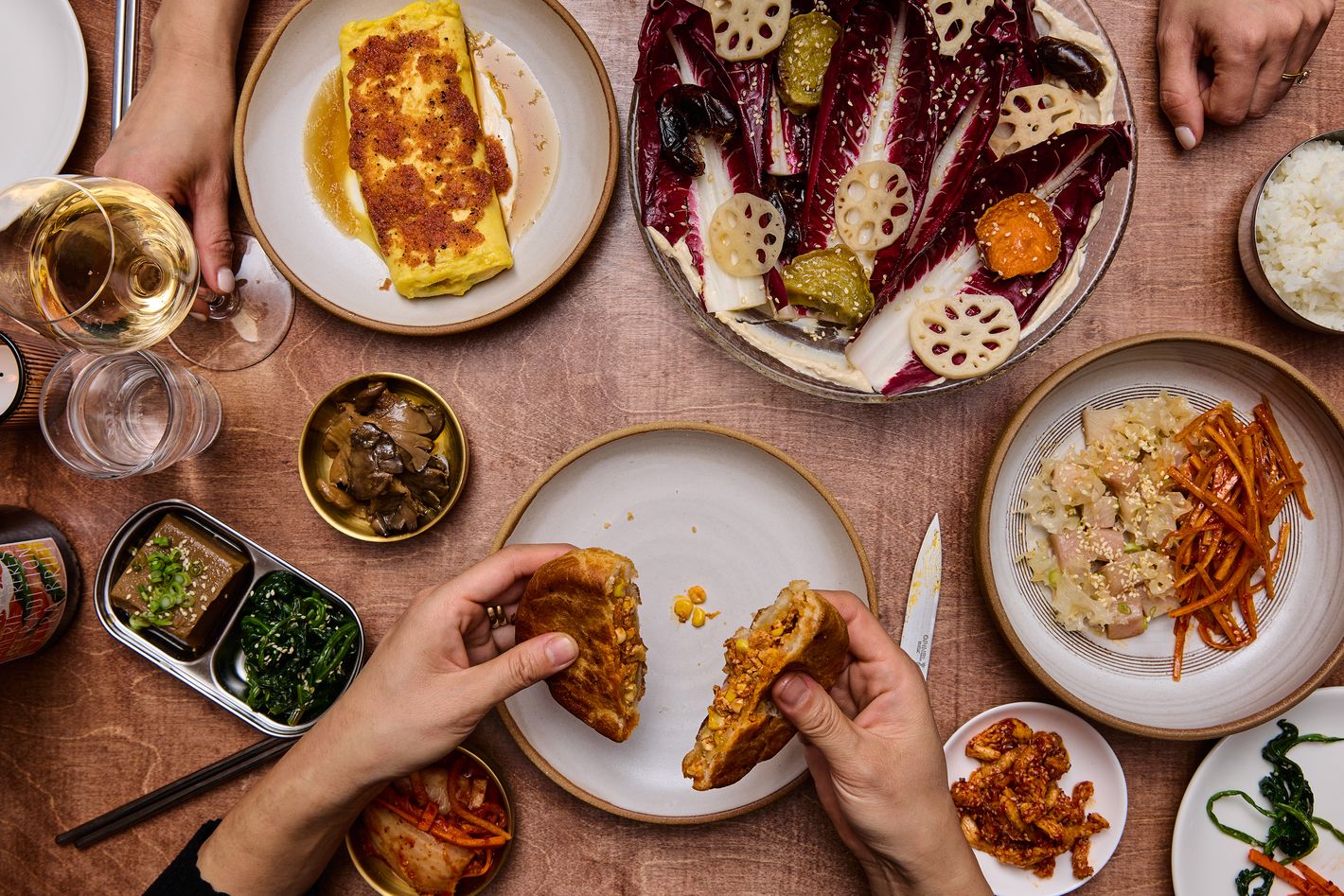when you want, where you want.
CJ Television
A Big-Deal Pop-up Makes the Most of Its Tiny New Home
 Photo: Michael Carnevale
Photo: Michael Carnevale
A decade after launching her Korean pop-up Banchan by Sunny, Sunny Lee reached the final level of the pop-up challenge late last year when she opened her first restaurant. Sunn’s is a banchan-and-wine bar on a sliver of Division Street that was formerly home to Pig Bar. It seats just 24 diners at a time and is serviced by a kitchenette concealed behind the blond wood bar. It’s there that the day’s assortment of banchan — as well as bubbling soup with crab and chicken dumplings and saucy, cheesy rice cakes — are dispatched. The workspace is minimal but proportionately cozy for the room, where the windows steamed and dripped with condensation on a recent 20-degree night.
Lee makes it work because the majority of the prep takes place during daytime hours, when the team can spread out across the handful of dining tables for enough counterspace to ready the weekly batches of kimchee and a rotating list of other components — the $23 banchan platter contains six items– all marinated on a specific schedule. “Everything tastes better on the third day,” Lee says, before stopping herself. “Maybe not the potato salad.”
For someone whose name is now synonymous with banchan, Lee was a relative latecomer to it, having grown up in a Boston suburb with her Korean father and her adopted mother eating “super American.” Then, at 21, she moved to New York, and “all of a sudden it was like, I wanna be Korean so badly.” As she (re)discovered Korean cooking, she started learning specific dishes through Maangchi’s Youtube channel and gradually incorporated her own sensibility into the craft before Banchan by Sunny’s first pop-up in 2015. “Starting to cook Korean food was the thing that I have never ever gotten tired of,” she says. “There’s nothing else I want to do in the world.”
At the same time, Lee didn’t cook much Korean food professionally, either in restaurants or while working as a private chef for five years. Her side project — which she calls “Banchan by Sunny 1.0” — took a more serious turn after she was connected with Fabián von Hauske, who was running the now-closed Peoples wine shop and bar at the time. “I always knew Sunny wanted to do her own thing but just ended up working for other people, and my sense was that there was always something missing,” Von Hauske says. Lee says her six-month residency there in 2021 was the first time she was able to plant her vision somewhere and watch it grow, even if the place’s transient nature was less than ideal. “Pop-ups are really fun,” she says, “but it really is like you’re a traveling circus.”
Now settled into a space of her own, Lee has been able to expand her menu beyond banchan. Everyone should start with a mayak kimbap, which is like the best version of a spicy tuna roll. Lee serves it as soon as it’s prepared with still-crackly seaweed, warm rice, and pickled ginger and beet against chopped tuna dressed with gochugaru, fish sauce, and enough Sichuan chile-bean paste to actually call it spicy. (There are some Rice Krispies in there for good measure.) It was a natural pairing for some off-dry riesling from a 2010 magnum, made by a producer who replaced all of his vines with pinot noir in 2013, an unexpected but harmonious choice from a place that is as serious about its wine as it is about everything else.
I was similarly impressed by the intensity of flavor around burdock root served with sliced raw fish. The burdock maintained its bite even as it was sliced into noodlelike batons, which are blanched and slightly pickled in yuzu juice before getting tossed with chile flakes, sesame seeds, and a touch of honey. The chewy strands were astringent, salty, spicy, and meant to evoke the vinegar-and-gochujang dip typically served with Korean sashimi; snappy cloud-ear mushroom on the plate references the cartilaginous texture of eyeballs and other choice pieces. The actual fish was chunks of kanpachi and exceedingly sweet scallops harvested by Lee’s father, a hobbyist diver who shucks the shells on his boat and vacuum-seals them immediately for weekly New York drop-offs. In return, Lee supplies him with containers of “all his favorite foods,” made by her in her new home.
More Eating New York
All Rights Reserved. Copyright , Central Coast Communications, Inc.